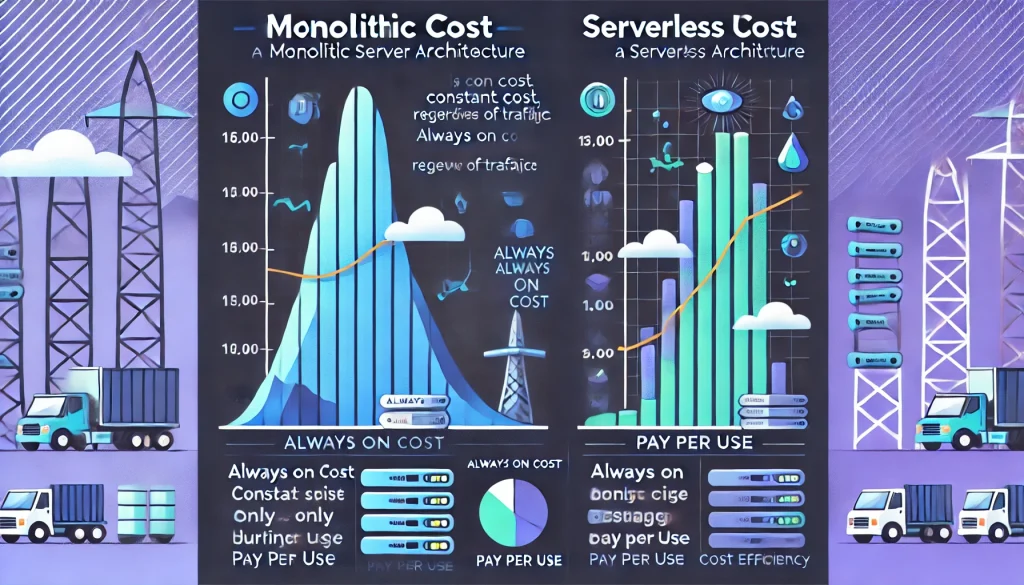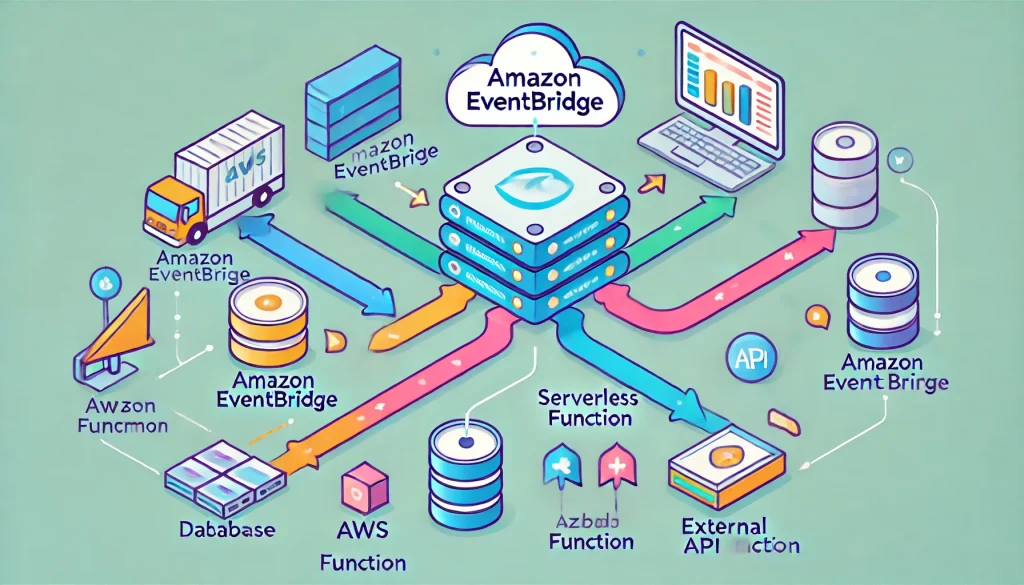As organizations seek more agility and cost efficiency, some devs pivot from monolithic architectures to serverless function-based solutions for select features. Serverless—or Function as a Service (FaaS)—lets you run code on demand, scaling automatically and charging only for execution time. But when exactly does it make sense to extract parts of a monolith into AWS Lambda, Azure Functions, or similar? Below, we explore event-driven scenarios, potential cost savings, plus limitations like cold starts and ephemeral storage. We’ll finish with a practical example migrating a single feature to FaaS for better performance or cost management.

1. Why Move from Monolith to Serverless?
1.1 Event-Driven Operations
- Scheduled Jobs: Cron-like tasks—like daily data batch processing or backups—fit well in FaaS.
- Webhooks & Triggers: Receives external triggers from user actions or third-party events, spinning up ephemeral logic.
- Spiky Workloads: If usage peaks unpredictably, serverless auto-scales, avoiding over-provisioning.
Benefit: Freed from maintaining always-on servers for tasks that run sporadically. Also reduces complexity of local job schedulers inside a monolith.
1.2 Cost Savings

- Pay-Per-Invocation: Only pay while code is running, ideal if you’re not saturating a dedicated VM or container 24/7.
- Reduced Ops: No server patching, OS maintenance, or container orchestration overhead.
- Elastic Scale: For ephemeral workloads—like inbound large file transformations—serverless can handle parallel invocations without upfront scaling.
Caution: If your function runs constantly, costs may surpass a well-optimized container. Evaluate usage patterns first.
1.3 Simplified Deployments
- Small, Focused Functions: Each feature is an independent chunk, with minimal code or dependencies.
- Faster Updates: Pushing a new version of a function typically requires a simpler pipeline than building entire monolithic warfiles or container images.
2. Main Limitations and Considerations
2.1 Cold Starts
- Latency: The first request after a function’s been idle triggers a container spin-up, leading to extra delays (tens or hundreds of ms).
- Mitigation: Use concurrency “warming,” higher memory settings, or keep functions “always warm” if the platform supports it (cost overhead possible).
Use Cases:
- Not always critical for background tasks, but can hamper user-facing endpoints if low latency is mandatory.
2.2 Ephemeral Local Storage
- Limited /tmp: Functions often have ephemeral storage that resets between invocations.
- No Long-Running State: If your monolith relies on in-memory or on-disk caches, you’ll need a distributed store (DynamoDB, Redis, or S3) for stateful data.
Tip: Embrace external data solutions. In serverless, each function is stateless, expecting “fresh” data from external services.
2.3 Observability and Debugging
- Distributed Logs: Once you have multiple functions, logs and performance data live in the cloud provider’s platform or aggregator.
- Locally Testing: Harder to replicate the environment offline; often rely on local emulators or developer-friendly frameworks.
Best Practice: Adopt logging, metrics, and tracing that unify data across all serverless endpoints (like AWS CloudWatch, Azure Monitor, or open solutions like Epsagon).
3. Use Cases That Shine for Serverless

- Scheduled Tasks: Daily reports, database cleanup, or emailing customers—zero cost if they only run once a day.
- User Hooks / Webhooks: On a user event (purchase, sign-up), serverless triggers custom logic.
- Batch or ETL: Data transformations that scale horizontally, letting each invocation handle a chunk.
- Prototyping: Quick to stand up a function for an experimental feature or internal tool.
Warning: For user-facing, high-traffic endpoints with low-latency demands, frequent cold starts or concurrency might hamper user experience. Evaluate carefully or consider a hybrid approach.
4. Example: Extracting a Single Feature from a Monolith
Scenario
- Legacy Monolith: A large e-commerce site where a daily “Order Summary Report” runs inside the monolith at midnight, sometimes slowing the entire system.
- Goal: Move this job to a serverless function, reduce load on the main app, scale easily if orders spike.
Steps to Integrate
- Identify Boundaries:
- The “Order Summary” job queries orders for the day, calculates totals, sends an email summary to staff.
- Minimal dependencies: DB read access, email service config.
- Choose Provider:
- Example: AWS Lambda for FaaS, plus Amazon EventBridge or CloudWatch scheduled event to trigger function at midnight.
- Alternatively, Azure Functions with a “Timer Trigger.”
- Refactor Code:
- Extract relevant logic from the monolith—like DB queries, summary calculations, email templates— into a separate package.
- Expose environment variables for DB credentials or email API tokens.
- Deploy & Test:
- Deploy to AWS Lambda (or Azure).
- Confirm environment variables, run an initial test or one-off invocation.
- Validate logs to see if summary emails send as expected.
- Disable Monolith’s Job:
- Remove or comment out the scheduled job from the monolith’s cron or scheduler.
- Confirm no collisions or double sends. Monitor performance improvements in the monolith around midnight.
Cost & Performance
- Cost: If the job runs once daily for ~30 seconds, AWS Lambda’s usage is minimal—likely within free tier unless you handle massive data.
- Performance: Freed from monolith concurrency, the function can scale horizontally if data spikes. The monolith also no longer suffers from slow threads at midnight.
5. Additional Microservices or Partial Monolith?
After a successful single function extraction, you can evaluate other monolith features:
- Use Faas for ephemeral tasks (like user image resizing or serverless concurrency-based workloads).
- Keep Core domain logic in a modular monolith if it sees constant usage or demands in-memory data sharing.
Hybrid approach: Large domain logic remains in a monolith or container-based microservice, while certain tasks or event-driven flows shift to FaaS for cost efficiency or separation of concerns.
6. Best Practices & Next Steps
- Infrastructure as Code: Manage serverless deployments with AWS SAM, Terraform, or Azure Bicep.
- Logging & Tracing: Use provider tools (CloudWatch, Application Insights) or distributed solutions to unify logs across monolith & serverless.
- Config & Secrets: Use AWS Systems Manager or Azure Key Vault for secure variable management.
- CI/CD Pipeline: Automate function packaging, test in ephemeral environment or local emulators, then deploy.
- Monitor Usage: Watch if your function runs more frequently than expected—this might spike costs or reveal unplanned triggers.
Conclusion
Serverless architecture is not a cure-all for monolithic woes, but FaaS can be a strategic ally for tasks suited to ephemeral triggers or spiky workloads. By extracting event-driven features—like scheduled tasks, webhooks, or batch processes—you lighten your monolith’s load, reduce infra costs, and accelerate iteration. However, watch for cold starts, ephemeral storage constraints, and the overhead of new logging or debugging approaches. Ultimately, a hybrid solution—part monolith, part serverless—can yield the best of both worlds, optimizing cost, reliability, and developer productivity.














